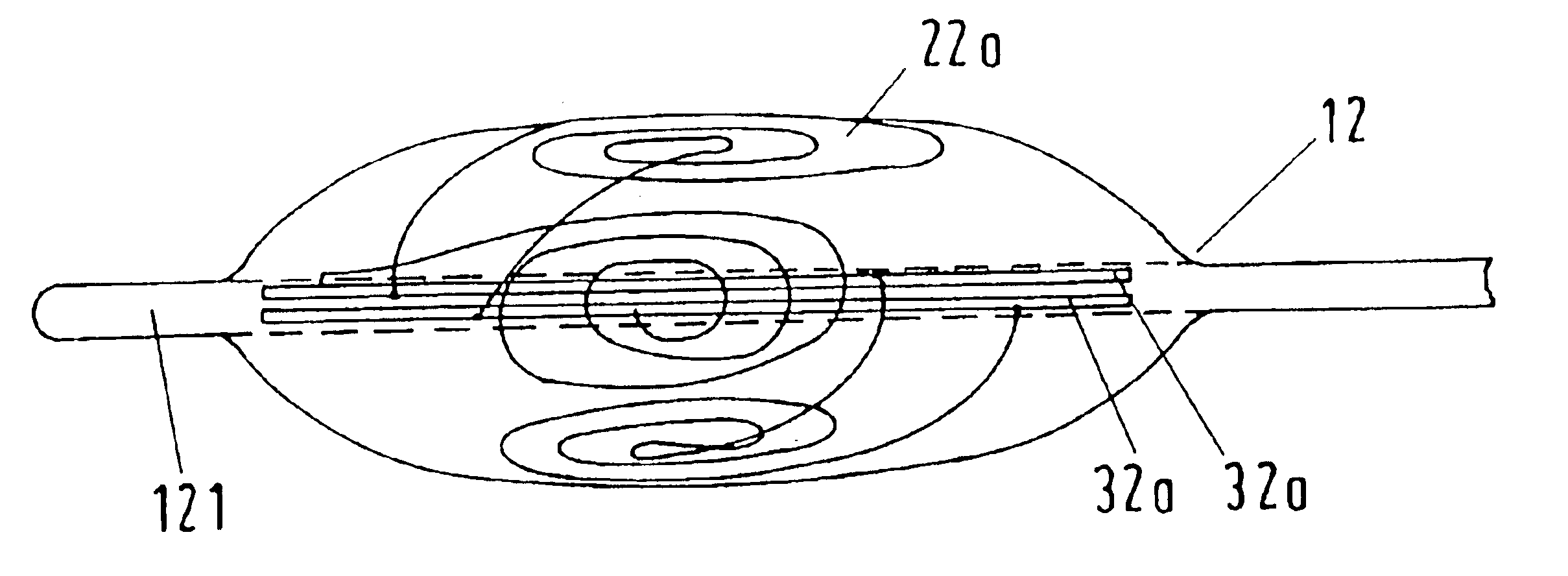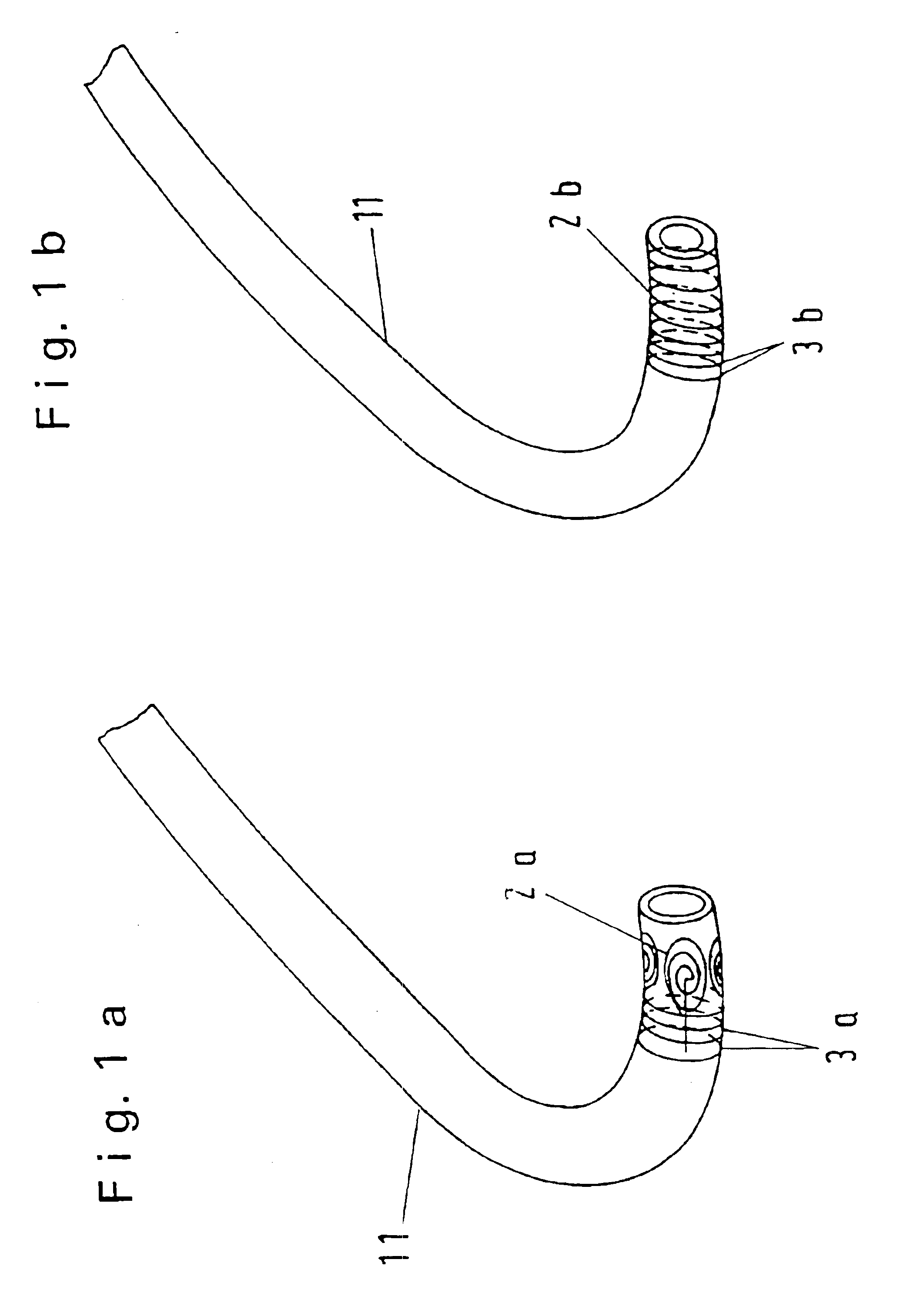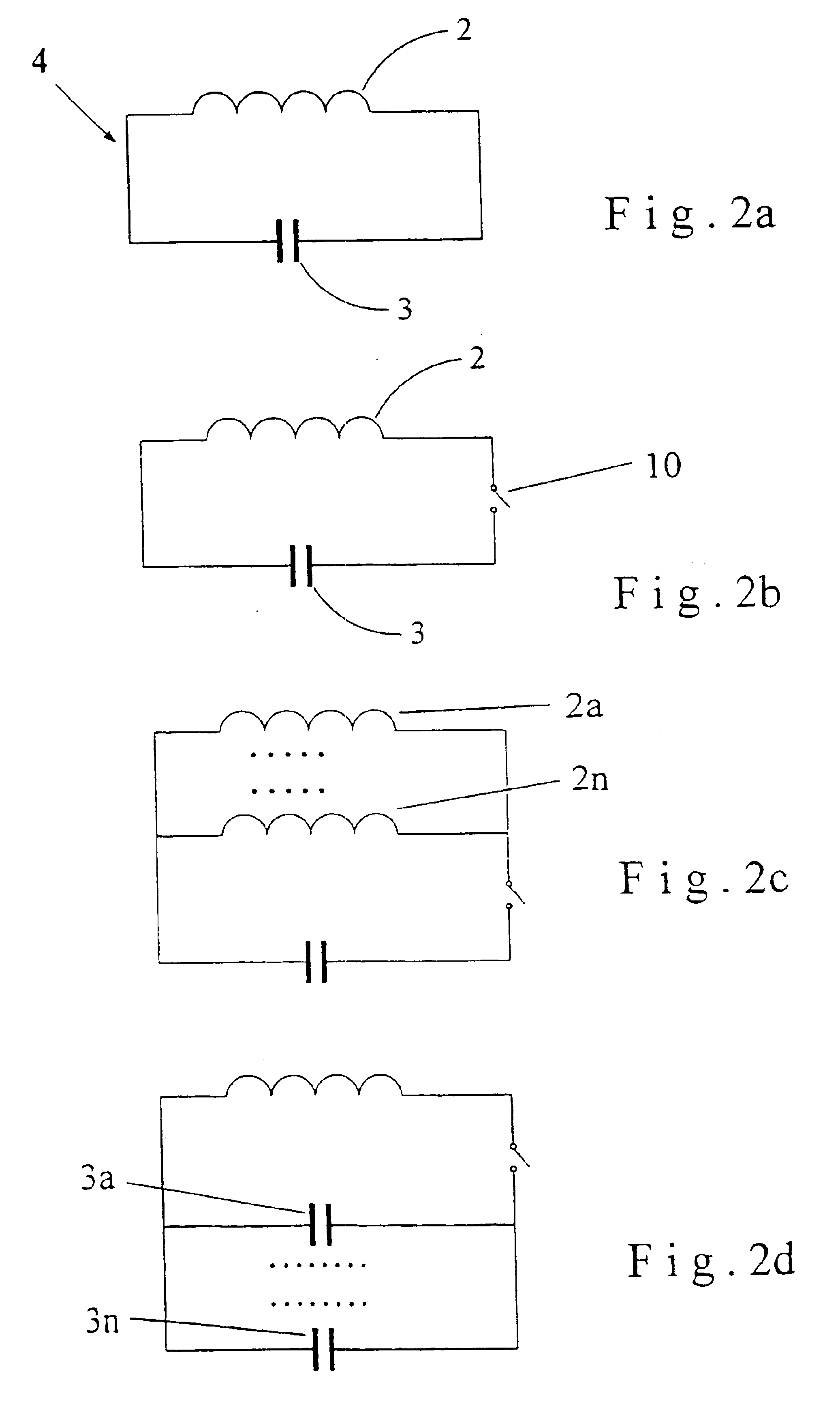MR imaging method and medical device for use in method
a magnetic resonance and imaging method technology, applied in the field of magnetic resonance imaging methods, can solve the problems of inability to achieve, inability to achieve, and inability to amplify the magnetic alternating field
- Summary
- Abstract
- Description
- Claims
- Application Information
AI Technical Summary
Benefits of technology
Problems solved by technology
Method used
Image
Examples
Embodiment Construction
">[0040]FIGS. 2a-2g—various electrical diagrams of a resonance circuit according to the invention;
[0041]FIGS. 3a and 3b—two exemplary embodiments of a balloon catheter designed according to the invention;
[0042]FIG. 4—a medical instrument with resonance circuits mounted on the sides of the instrument;
[0043]FIG. 5—a perspective depiction of an alternative embodiment of the medical instrument of FIG. 4;
[0044]FIGS. 6a and 6b—two exemplary embodiments of a dental implant designed according to the invention;
[0045]FIGS. 7a and 7b—two exemplary embodiments of a joint implant designed according to the invention;
[0046]FIGS. 8a and 8b—two exemplary embodiments of a vena cava filter designed according to the invention; and
[0047]FIGS. 9a and 9b—two exemplary embodiments of a cardiac valve designed according to the invention.
DETAILED DESCRIPTION OF THE INVENTION
[0048]FIGS. 1a and 1b depict a guide wire or catheter 11, on the point of which a resonance circuit consisting of an inductor 2a, 2b and ...
PUM
 Login to View More
Login to View More Abstract
Description
Claims
Application Information
 Login to View More
Login to View More - R&D
- Intellectual Property
- Life Sciences
- Materials
- Tech Scout
- Unparalleled Data Quality
- Higher Quality Content
- 60% Fewer Hallucinations
Browse by: Latest US Patents, China's latest patents, Technical Efficacy Thesaurus, Application Domain, Technology Topic, Popular Technical Reports.
© 2025 PatSnap. All rights reserved.Legal|Privacy policy|Modern Slavery Act Transparency Statement|Sitemap|About US| Contact US: help@patsnap.com



